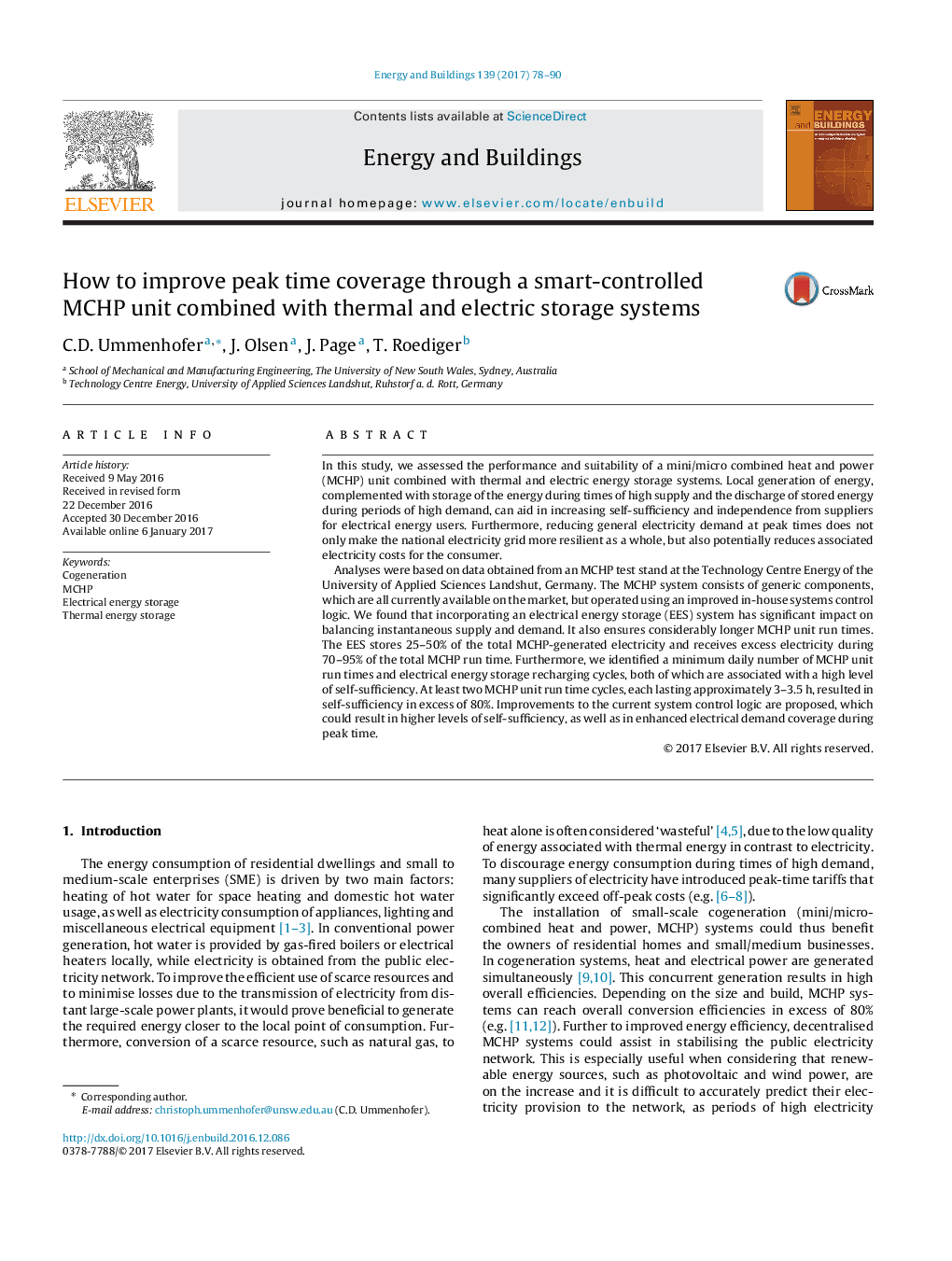| Article ID | Journal | Published Year | Pages | File Type |
|---|---|---|---|---|
| 4919306 | Energy and Buildings | 2017 | 13 Pages |
Abstract
Analyses were based on data obtained from an MCHP test stand at the Technology Centre Energy of the University of Applied Sciences Landshut, Germany. The MCHP system consists of generic components, which are all currently available on the market, but operated using an improved in-house systems control logic. We found that incorporating an electrical energy storage (EES) system has significant impact on balancing instantaneous supply and demand. It also ensures considerably longer MCHP unit run times. The EES stores 25-50% of the total MCHP-generated electricity and receives excess electricity during 70-95% of the total MCHP run time. Furthermore, we identified a minimum daily number of MCHP unit run times and electrical energy storage recharging cycles, both of which are associated with a high level of self-sufficiency. At least two MCHP unit run time cycles, each lasting approximately 3-3.5Â h, resulted in self-sufficiency in excess of 80%. Improvements to the current system control logic are proposed, which could result in higher levels of self-sufficiency, as well as in enhanced electrical demand coverage during peak time.
Related Topics
Physical Sciences and Engineering
Energy
Renewable Energy, Sustainability and the Environment
Authors
C.D. Ummenhofer, J. Olsen, J. Page, T. Roediger,
